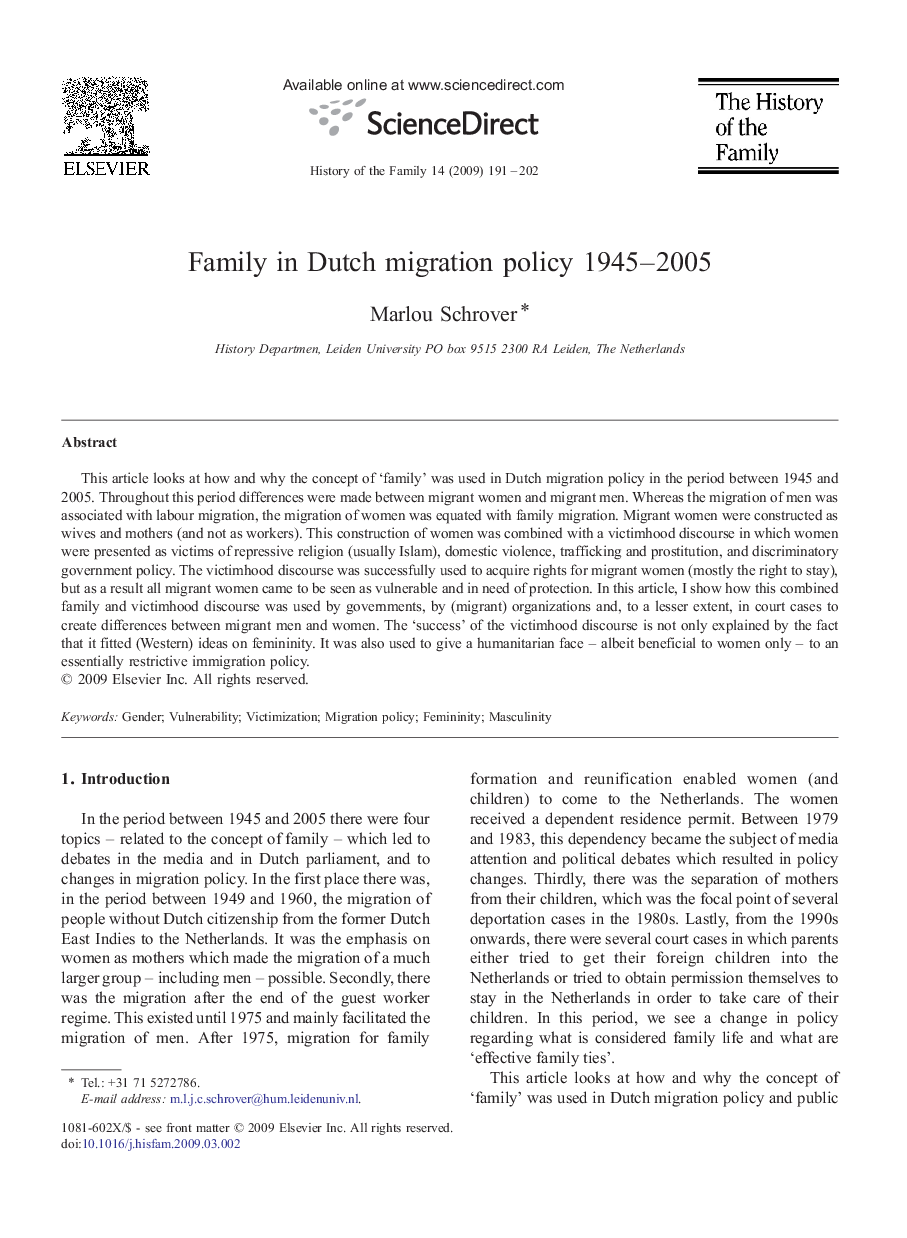| کد مقاله | کد نشریه | سال انتشار | مقاله انگلیسی | نسخه تمام متن |
|---|---|---|---|---|
| 1127021 | 1488646 | 2009 | 12 صفحه PDF | دانلود رایگان |
عنوان انگلیسی مقاله ISI
Family in Dutch migration policy 1945-2005
دانلود مقاله + سفارش ترجمه
دانلود مقاله ISI انگلیسی
رایگان برای ایرانیان
کلمات کلیدی
موضوعات مرتبط
علوم انسانی و اجتماعی
علوم انسانی و هنر
تاریخ
پیش نمایش صفحه اول مقاله

چکیده انگلیسی
This article looks at how and why the concept of 'family' was used in Dutch migration policy in the period between 1945 and 2005. Throughout this period differences were made between migrant women and migrant men. Whereas the migration of men was associated with labour migration, the migration of women was equated with family migration. Migrant women were constructed as wives and mothers (and not as workers). This construction of women was combined with a victimhood discourse in which women were presented as victims of repressive religion (usually Islam), domestic violence, trafficking and prostitution, and discriminatory government policy. The victimhood discourse was successfully used to acquire rights for migrant women (mostly the right to stay), but as a result all migrant women came to be seen as vulnerable and in need of protection. In this article, I show how this combined family and victimhood discourse was used by governments, by (migrant) organizations and, to a lesser extent, in court cases to create differences between migrant men and women. The 'success' of the victimhood discourse is not only explained by the fact that it fitted (Western) ideas on femininity. It was also used to give a humanitarian face - albeit beneficial to women only - to an essentially restrictive immigration policy.
ناشر
Database: Elsevier - ScienceDirect (ساینس دایرکت)
Journal: The History of the Family - Volume 14, Issue 2, 2009, Pages 191-202
Journal: The History of the Family - Volume 14, Issue 2, 2009, Pages 191-202
نویسندگان
Marlou Schrover,